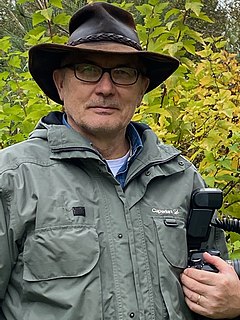
Burmattus is a genus of Asian jumping spiders that was first described by Jerzy Prószyński in 1992. The name is derived from "Burma", and "-attus", a common suffix for salticid genera.
Ghumattus is a monotypic genus of Indian jumping spiders containing the single species, Ghumattus primus. It was first described by Jerzy Prószyński in 1992, and is only found in India.
Habrocestoides is a genus of the spider family Salticidae. Most species are endemic to India, with H. phulchokiensis found only in Nepal.
Heliophanoides is a genus of the spider family Salticidae.
Ligdus is a genus of jumping spiders found in Burma. It contains only one species, Ligdus chelifer.
Omoedus is a genus of jumping spiders.
Similaria is a monotypic genus of Indian jumping spiders containing the single species, Similaria enigmatica. It was first described by Jerzy Prószyński in 1992, and is found only in India.

Udvardya is a genus of jumping spider endemic to New Guinea. As of 2017, it contains only one species, Udvardya elegans.
Okinawicius is a genus of spiders in the family Salticidae. It was first described in 2016 by Prószyński. As of 2017, it contains 9 species.
Psenuc is a genus of spiders in the family Salticidae. It was first described in 2016 by Prószyński. As of 2017, it contains 11 species.
Nandicius is a genus of spiders in the family Salticidae. It was first described in 2016 by Jerzy Prószyński. As of 2017, it contains 7 Asian species.
Rudakius is a genus of spiders in the family Salticidae. It was first described in 2016 by Prószyński. As of 2017, it contains 7 species.

Marek Michał Żabka is a Polish arachnologist. His main research area is the spider family Salticidae, especially their systematics and biogeography. He has produced nearly 80 scientific publications, popular science articles and a book. The World Spider Catalog lists 25 genus names or synonyms and 237 species names or synonyms of which he is either the sole author or a co-author. Nine jumping spider species and one ant spider species have been given the specific name zabkai.
Phintella parva is a jumping spider species that lives in China, Japan and Korea. The species was originally named Icius parvus by Wanda Wesołowska in 1981, but was transferred to the genus Phintella in 1983 by Jerzy Prószyński and renamed Phintella parva when both sexes were described in 1992.
Heliophanoides epigynalis is a jumping spider species in the genus Heliophanoides that lives in India. The female was first described in 1992.
Heliophanoides spermathecalis is a jumping spider species in the genus Heliophanoides that lives in India. The female was first described in 1992.
Sittisax is a genus of spiders in the family Salticidae.
Jerzy Prószyński is a Polish arachnologist specializing in systematics of jumping spiders. He is a graduate of the University of Warsaw, a long-term employee of the Siedlce University of Natural Sciences and Humanities and the Institute of Zoology of the Polish Academy of Sciences in Warsaw.
Padillothorus is a genus of jumping spiders in the family Salticidae containing the single species, Padillothorus elegans. It was first described by Jerzy Prószyński in 2018, and has only been found in Indonesia.


